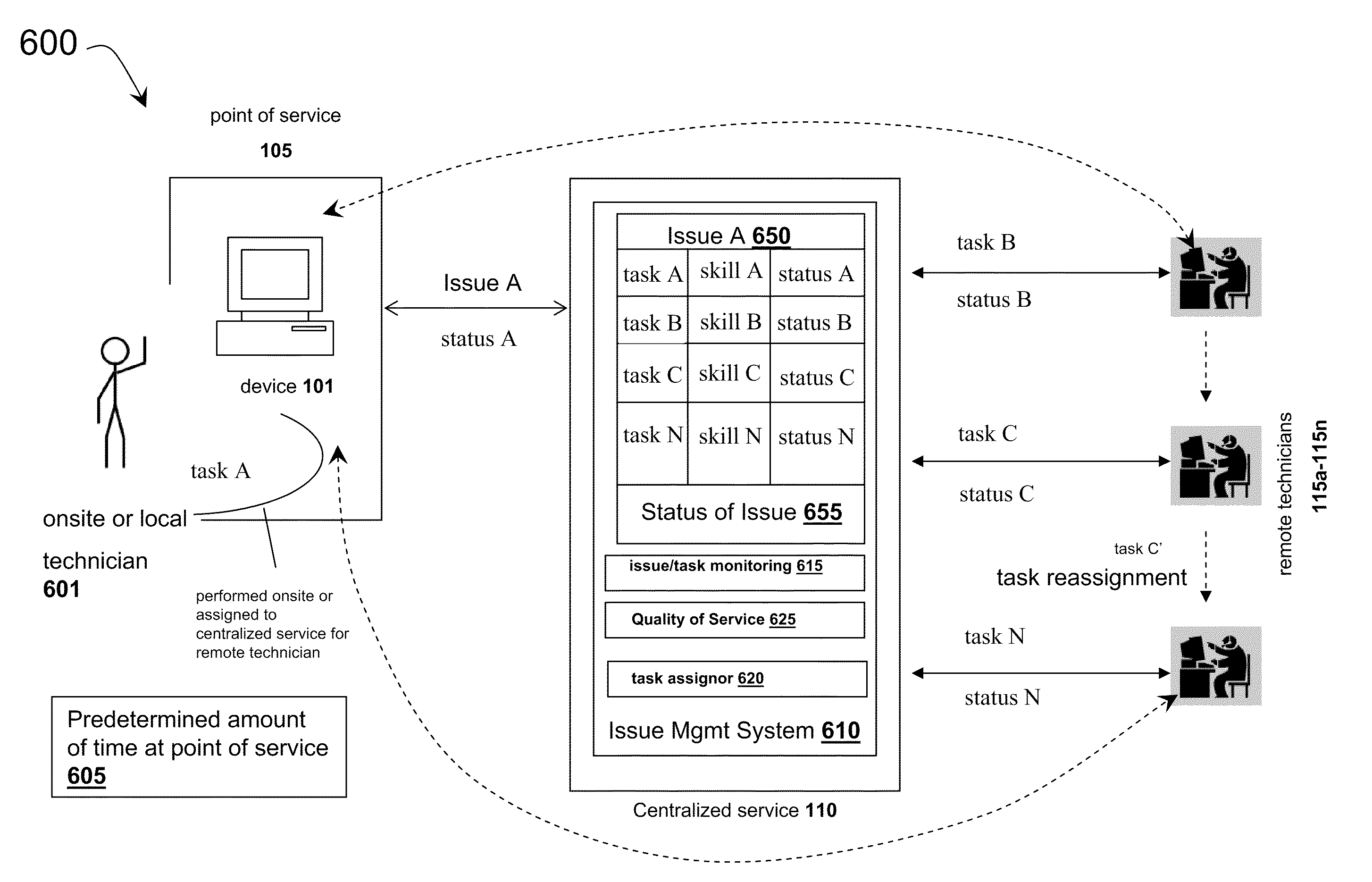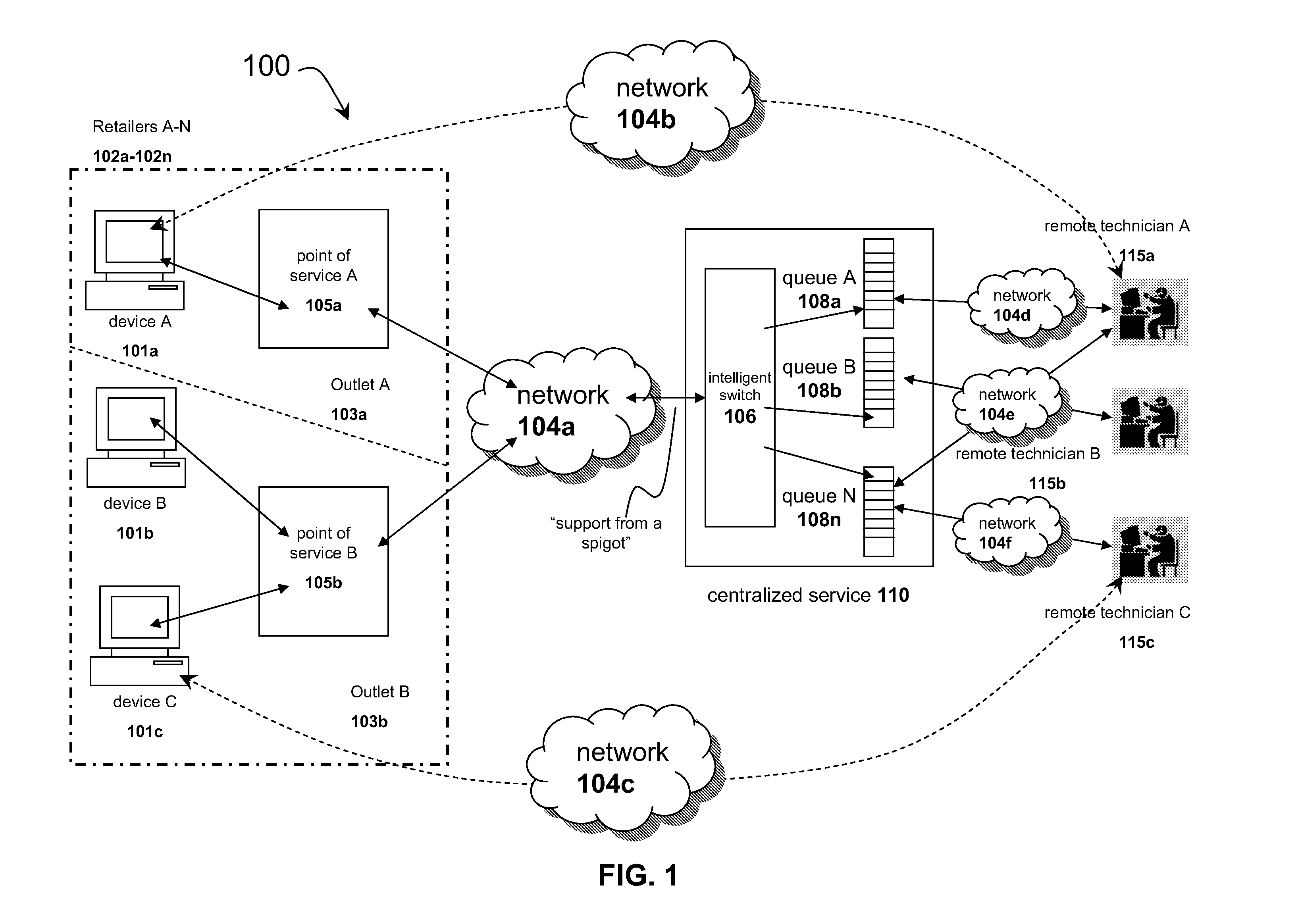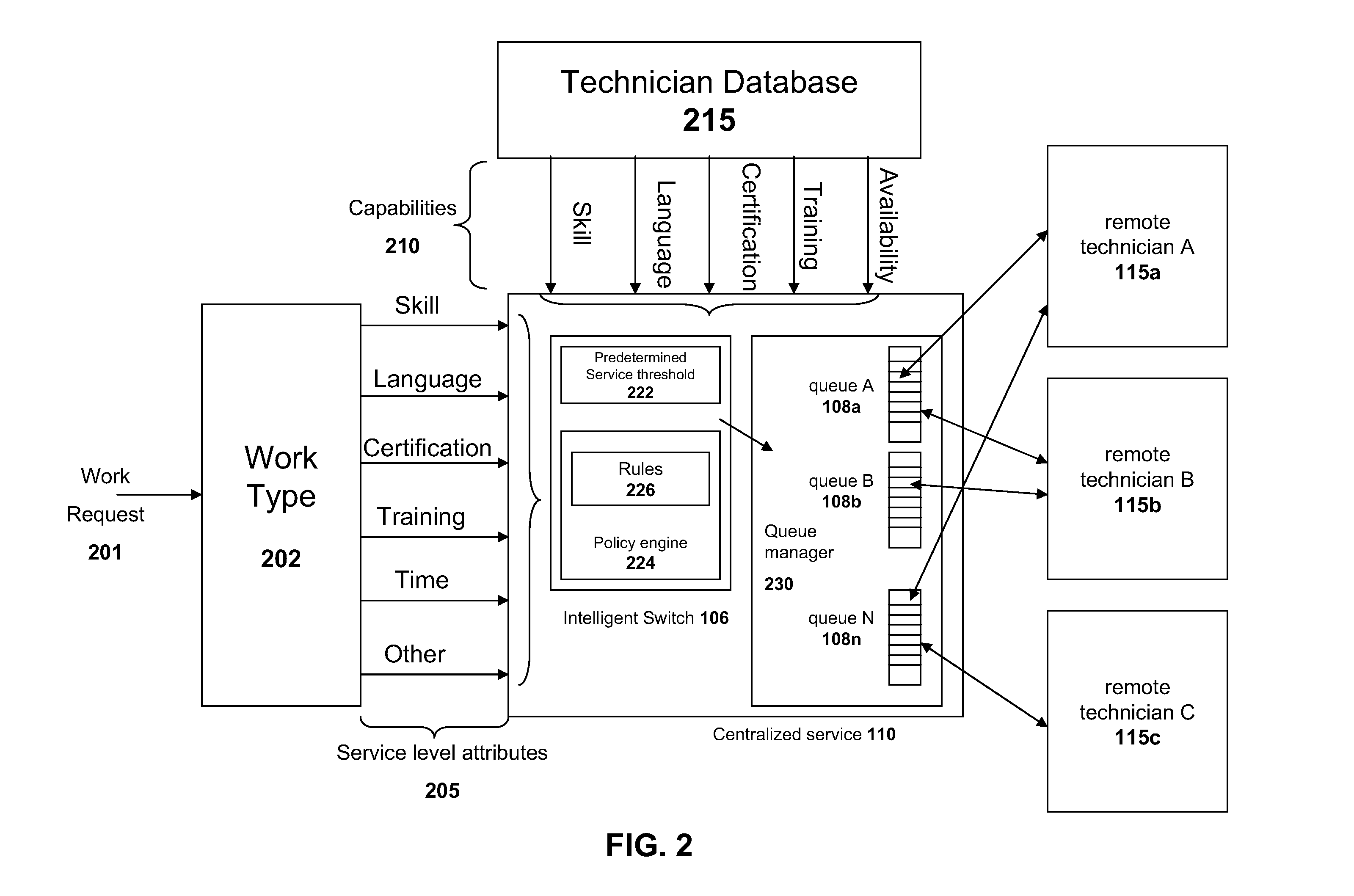Systems and methods for hybrid delivery of remote and local technical support via a centralized service
a technology of remote and local technical support and centralized service, applied in the field of systems and methods, can solve the problems of waste of labor, inconvenient and expensive delivery of labor to the home, short visit or long visit, etc., and achieve the effects of improving quality, reducing cost, and improving reliability
- Summary
- Abstract
- Description
- Claims
- Application Information
AI Technical Summary
Benefits of technology
Problems solved by technology
Method used
Image
Examples
Embodiment Construction
[0026]For purposes of reading the description of the various embodiments of the present invention below, the following descriptions of the sections of the specification and their respective contents may be helpful:[0027]Section A describes a platform and centralized service for providing on demand and online remote technical support services; and[0028]Section B describes systems and methods for delivering technical support services using a hybrid model of local onsite support with remote online support services.
A. Centralized Service for Providing on Demand and Online Technical Support
[0029]Referring to FIG. 1, a block diagram of an environment 100 to provide remote technical support to a device via a centralized service is shown and described. In brief overview, the system includes one or more consumer outlets 103a, 103b (103 in general) of a retailer 102 connected via a network 104 to a centralized service 110. In one embodiment, the centralized service 110 provides an interface t...
PUM
 Login to View More
Login to View More Abstract
Description
Claims
Application Information
 Login to View More
Login to View More - R&D
- Intellectual Property
- Life Sciences
- Materials
- Tech Scout
- Unparalleled Data Quality
- Higher Quality Content
- 60% Fewer Hallucinations
Browse by: Latest US Patents, China's latest patents, Technical Efficacy Thesaurus, Application Domain, Technology Topic, Popular Technical Reports.
© 2025 PatSnap. All rights reserved.Legal|Privacy policy|Modern Slavery Act Transparency Statement|Sitemap|About US| Contact US: help@patsnap.com



